I spoke too soon. It was overcast and wet my first day here in Granada – I arrived having left the sun (sea & sand) of Malaga & the Costa del Sol behind. But that was a few days ago now & the anomaly of clouds & rain has passed. It’s beautiful here today, day 3 in the capital of the province of the same name, a city with a population of some 260,000. There’s a very different feel to life here; the city is a more worklike, bohemian looking & feeling place compared to the glitzy, polished coast.
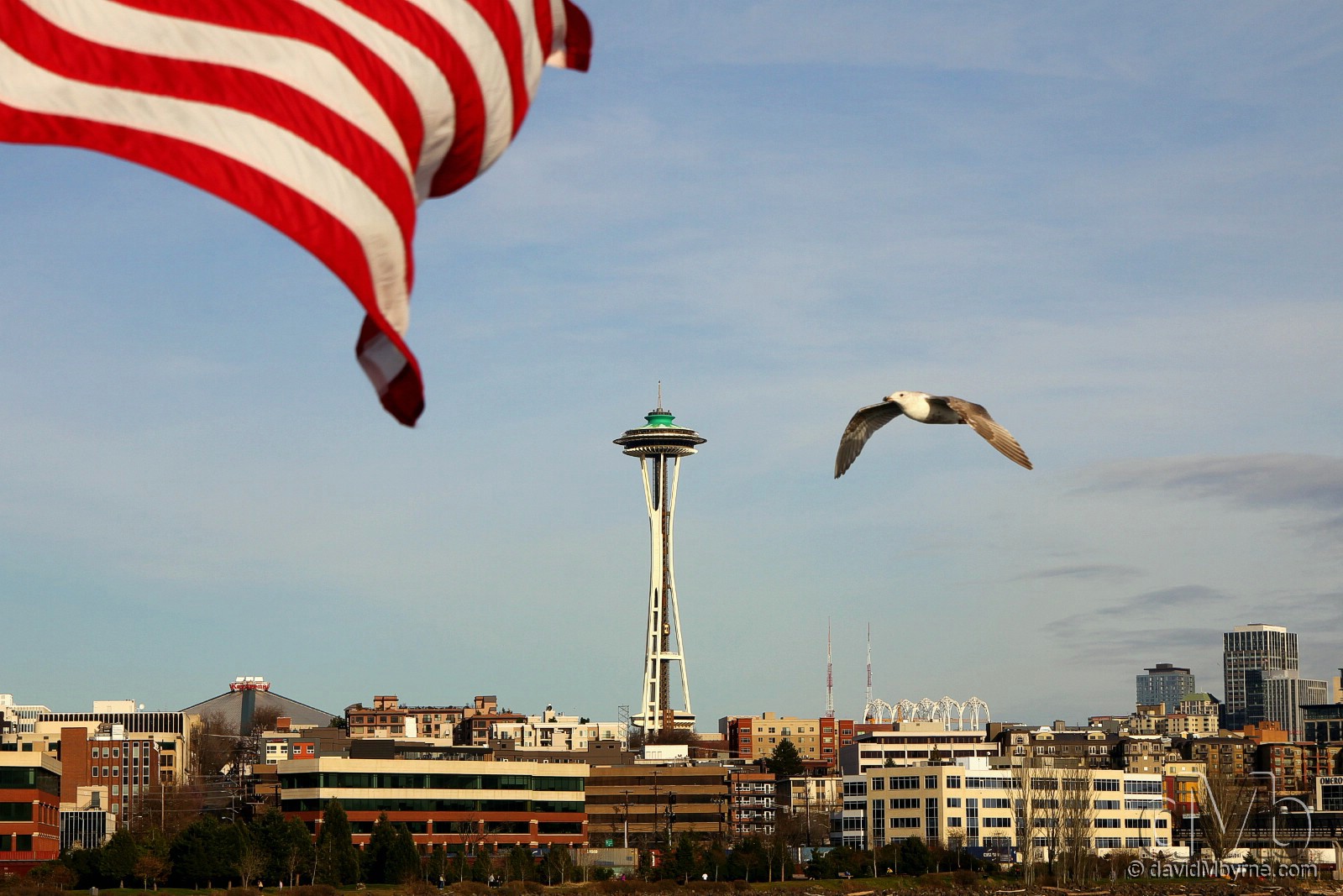
Seattle as seen from Elliott Bay. Seattle, Washington, USA. March 25th, 2013 (EOS 60D || Tamron 28-75mm || 56mm, 1/640sec, f/8.0, iso100)
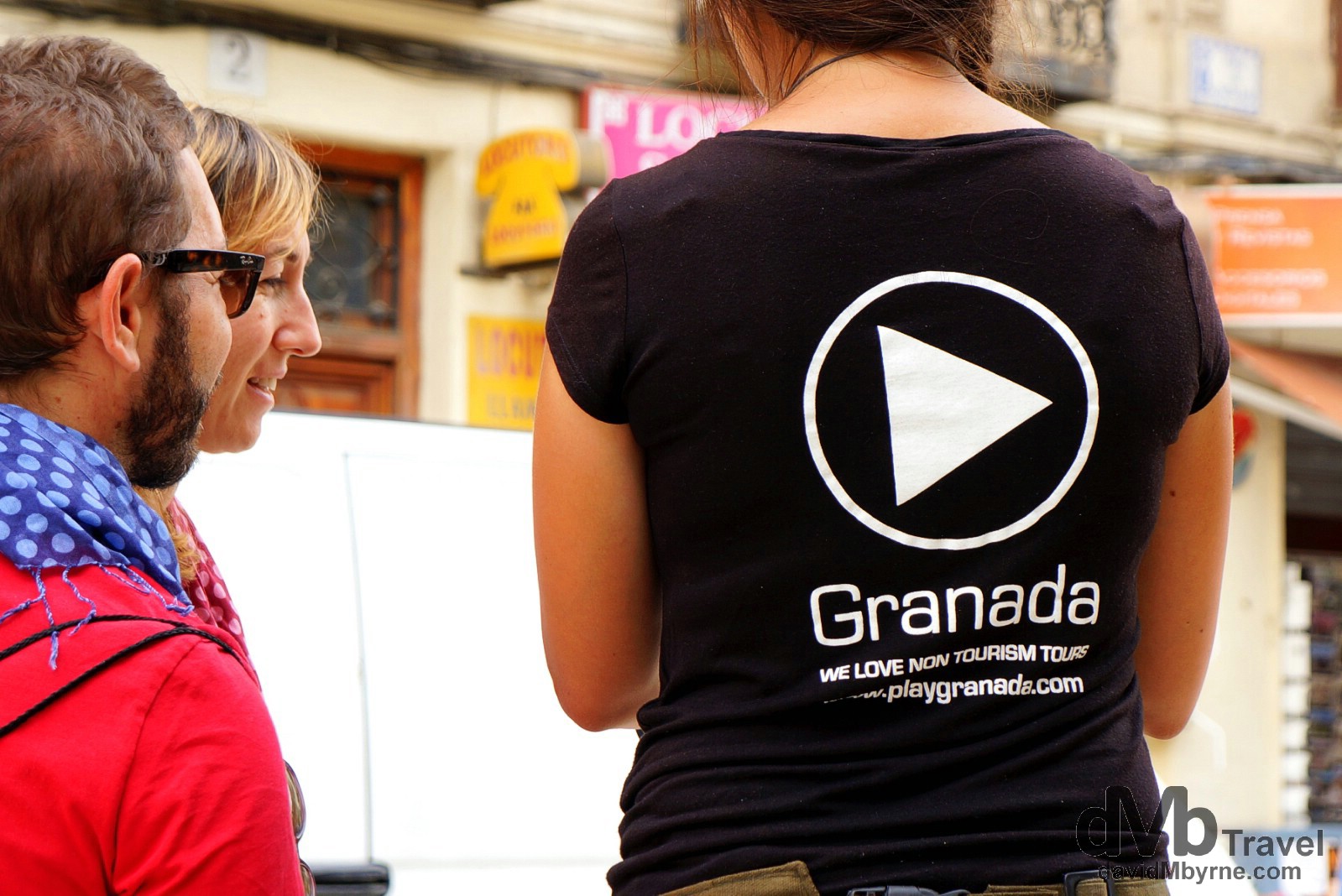
The weather may not have impressed me on my first evening in the city but this did, pretty, bilingual girls zipping around the central Plaza Nueva on segways assisting tourists with questions. Genius. Plaza Nueva, Granada, Andalusia, Spain. June 10th, 2014 (NEX-5r || SEL1855 || 55mm, 1/100sec, f/5.6, iso100)
Arrived in #Granada #Spain today. Love this place already. Ruta de las Tapas (the route of tapas) &… http://t.co/rEFelzKNpw
— davidMbyrne.com (@ByrneDavidM) June 10, 2014
I didn’t expect Granada to be as photogenic as it is. I knew it would be (I’ve seen pictures) but it still surprised me. I’ve taken a dMb standard number of captures since arriving in the city a few nights ago (no más, no menos) but I’ve had difficulty culling so I’m just going to throw the proverbial kitchen sink at this posting by uploading way more pictures from Granada than I should, and not one of them is from the innards of not only the city’s but Spain’s number one tourist attraction, the Alhambra.
Alhambra

Part fortress, part palace and part garden, the Alhambra is situated on a plateau overlooking the city of Granada and regularly tops the list of must-see tourist sights in Spain. The country’s most famous structure was initially built as a Muslim fortress in the 9th century. It was built to its present form in the 14th century, during the golden age of Andalusia when the city was the capital of an independent emirate, the last bastion of Islam on the Iberian Peninsula (present-day Spain & Portugal). The Muslims ruled from the increasingly lavish Alhambra Palace for over 250 years, a period of artistic & scientific splendor which saw Granada become one of the richest cities in medieval Europe. Things changed in the 15th century with the Muslim defeat by the Christian armies of the Catholic Monarchs Isabel & Fernando, bringing to an end almost 800 years of Muslim rule, the Muslims having first arrived in 711 by invaded the Iberian Peninsula from northern Africa. The Christians used the Alhambra Palace for several years after their victory changing mosques into churches and demolishing areas of the palace altogether to make way for Christian-inspired buildings & monuments. Today the Alhambra attracts over 6000 visitors a day (a set, restricted number) & it has been a UNESCO World Herritage listed site since 1984, as have the neighbouring Generalife gardens & the old Islamic district of Albayzin across the Darro valley from the Alhambra & from where this picture was taken. The Alhambra as seen from Mirador (Gazebo) San Nicolas in the Albayzin district of Granada. June 11th, 2014 (EOD 60D || Canon 70-300 || 70mm, 1/250sec, f/5.6, iso100)
– UNESCO commenting on the Alhambra, Generalife and Albayzín in Granada
Palacio Nazaries
The billed highlight of any visit to the Alhambra is its Palacio Nazaries, access to which is strictly controlled by a time stamped on admission tickets in a bid to help its preservation. It’s still a busy place, overrun with very annoying tour groups. I had an 8:30am ticket, meaning I was one of the first admitted to the palace on this day, giving me about an hour to look around before the hordes arrived. That was time enough to appreciate the lavishly decorated palace rooms, the marble pillared & reflecting pool courtyards, the numerous water fountains, & the proliferation of decorative zellij (ceramic tile work) & intricately moulded Arabic inscriptions in the stucco & astonishingly carved woodwork. It’s no doubt impressive and rightly is ‘the most brilliant Islamic building in Europe’ – I’m with Lonely Planet on that call, not that, in fairness, Europe can boast a string of ‘brilliant’ Islamic buildings. But – and here’s the but – as impressive as it is the Palacio Nazaries is just like every other building in Morocco, and having just recently spent 6 weeks touring Morocco the Islamic charms of the Alhambra were no novelty to me. I took pictures, of course I did, but none I really liked. And once the crowds arrived I put the camera away altogether & I escaped to the gardens, at least until such time as the crowds caught up with me there.
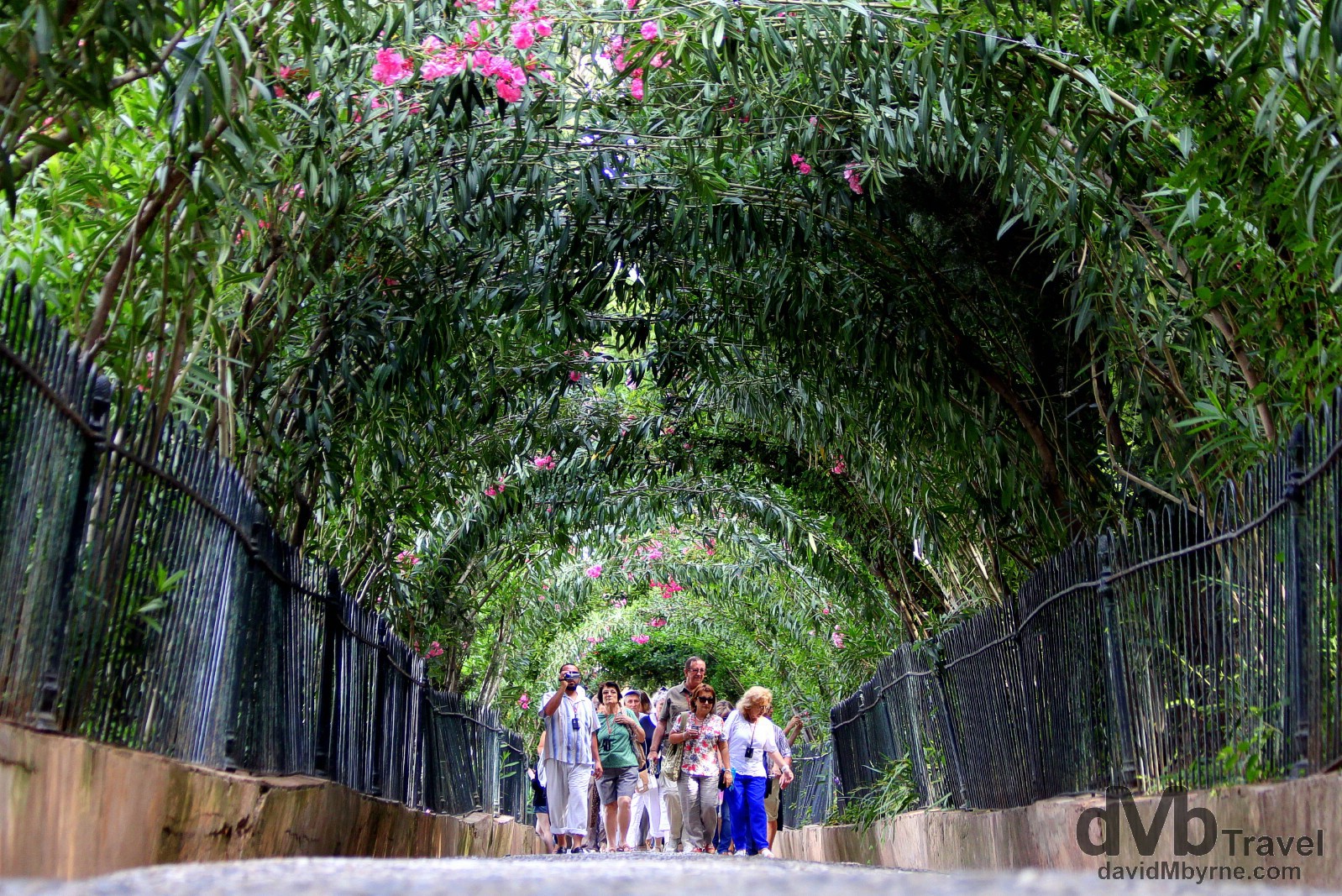
A tour group walks through a rosebush tunnel in a section of the UNESCO-listed Generalife gardens where the Alhambra rulers would come to emm, smell the roses. The Generalife, meaning Architect’s Garden, is a (mostly) peaceful, soothing composition of pathways, patios, pools, fountains, trimmed hedges, tall trees and rosebush tunnels, all of which offer a nice respite to the crowds in the rooms of the Alhambra (until of course they follow you to the gardens where you can then use them as subjects in your pictures). Granada, Andalusia, Spain. June 11th, 2014 (EOS 60D || Canon 70-300 || 70mm, 1/125sec, f/4.0, iso500)
– UNESCO
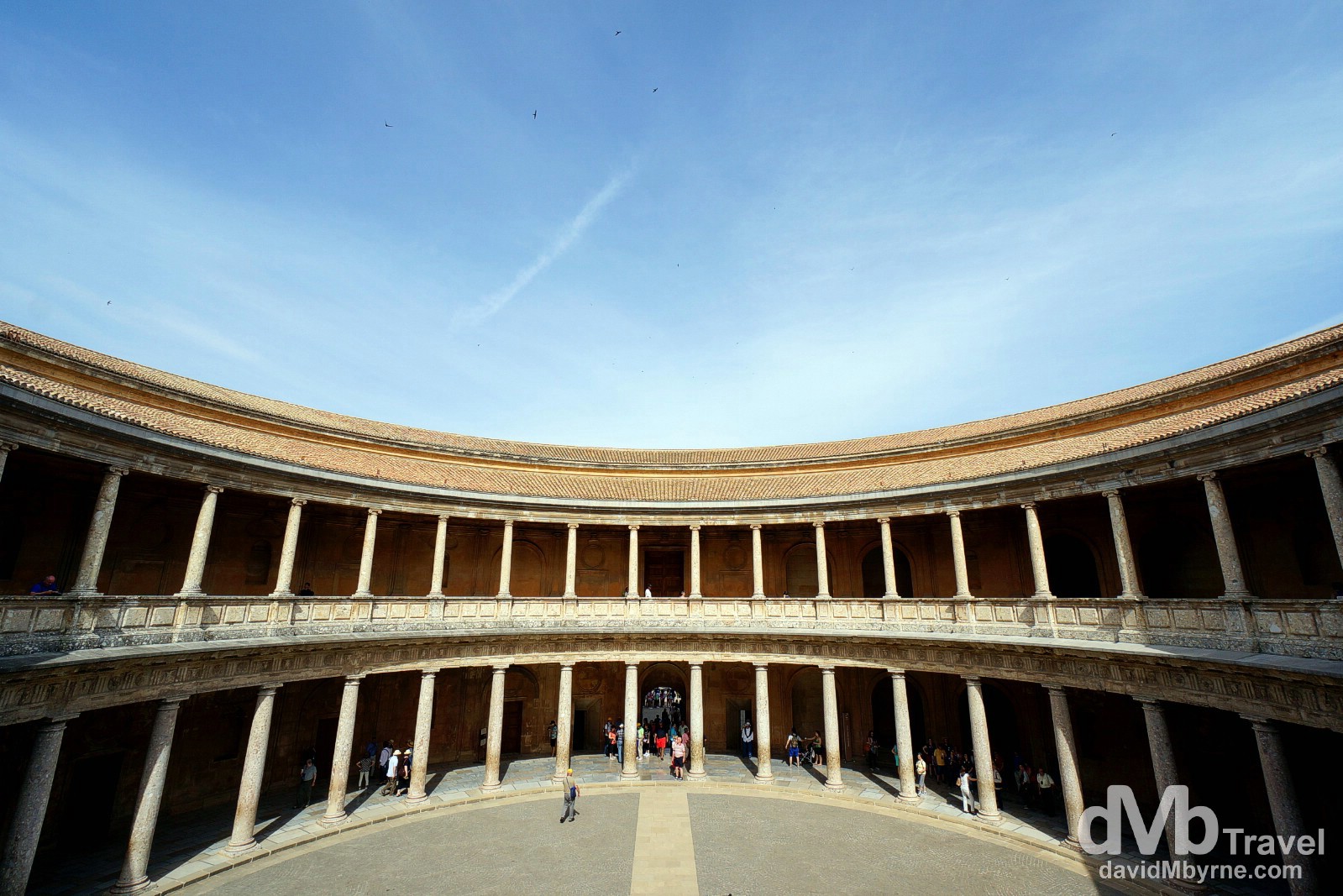
A section of the Muslim Alhambra was destroyed in 1527 to make way for this, the unfinished Palacio de Carlos V. The exterior of this imposing Renaissance structure is square in shape but its two-tiered, 32-column interior courtyard is very much circular. I loved it in here, playing with angles, symmetry & shadows. Awesome wide-angle territory. Palacio de Carlos V in the Alhambra in Granada, Andalusia, Spain. June 11th, 2014 (NEX-5r || SEL1018 || 10mm, 1/250sec, f/9.0, iso100)
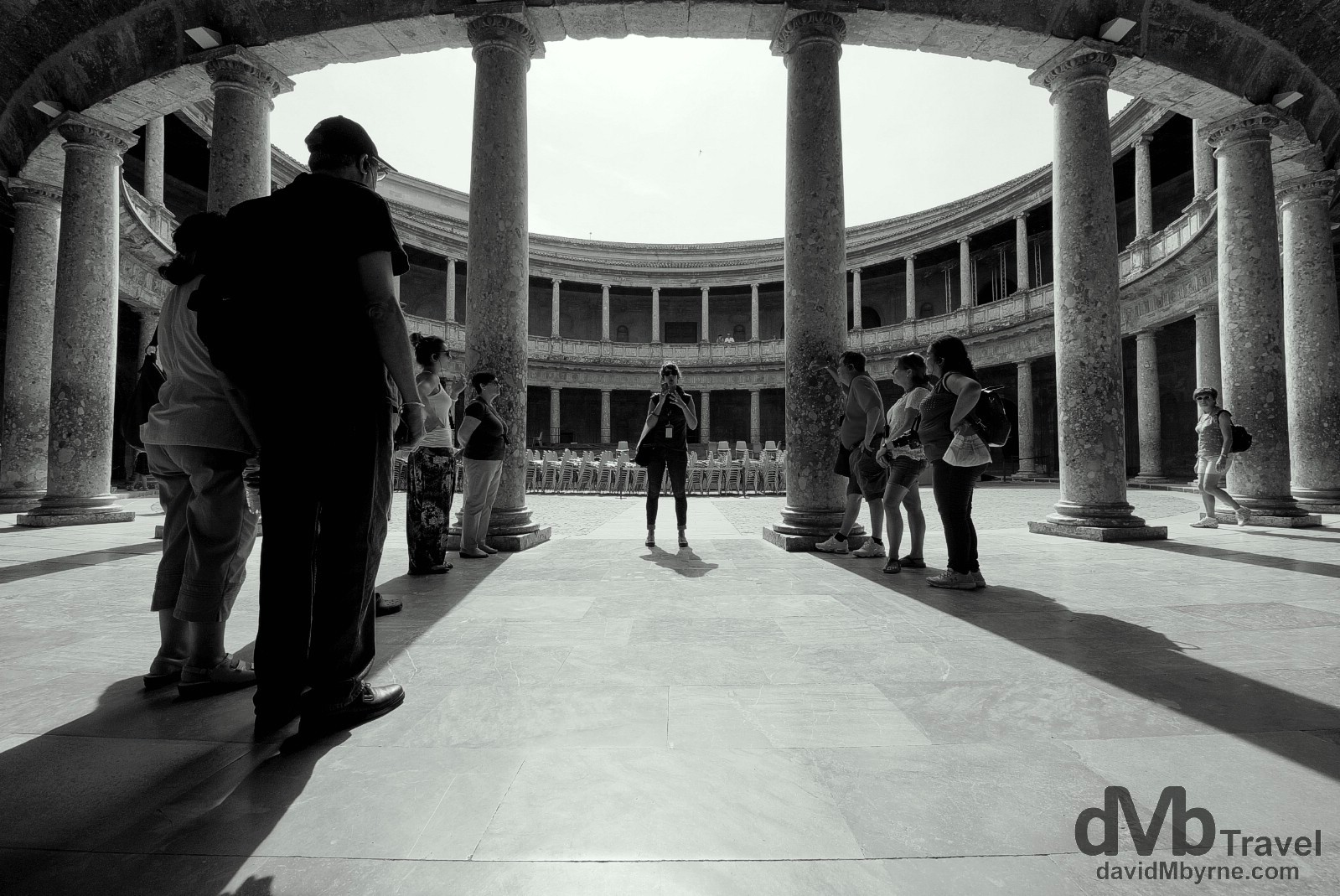
Tour group shadows in Palacio de Carlos V in the Alhambra in Granada, Andalusia, Spain. June 11th, 2014 (NEX-5r || SEL1018 || 10mm, 1/250sec, f/9.0, iso100)
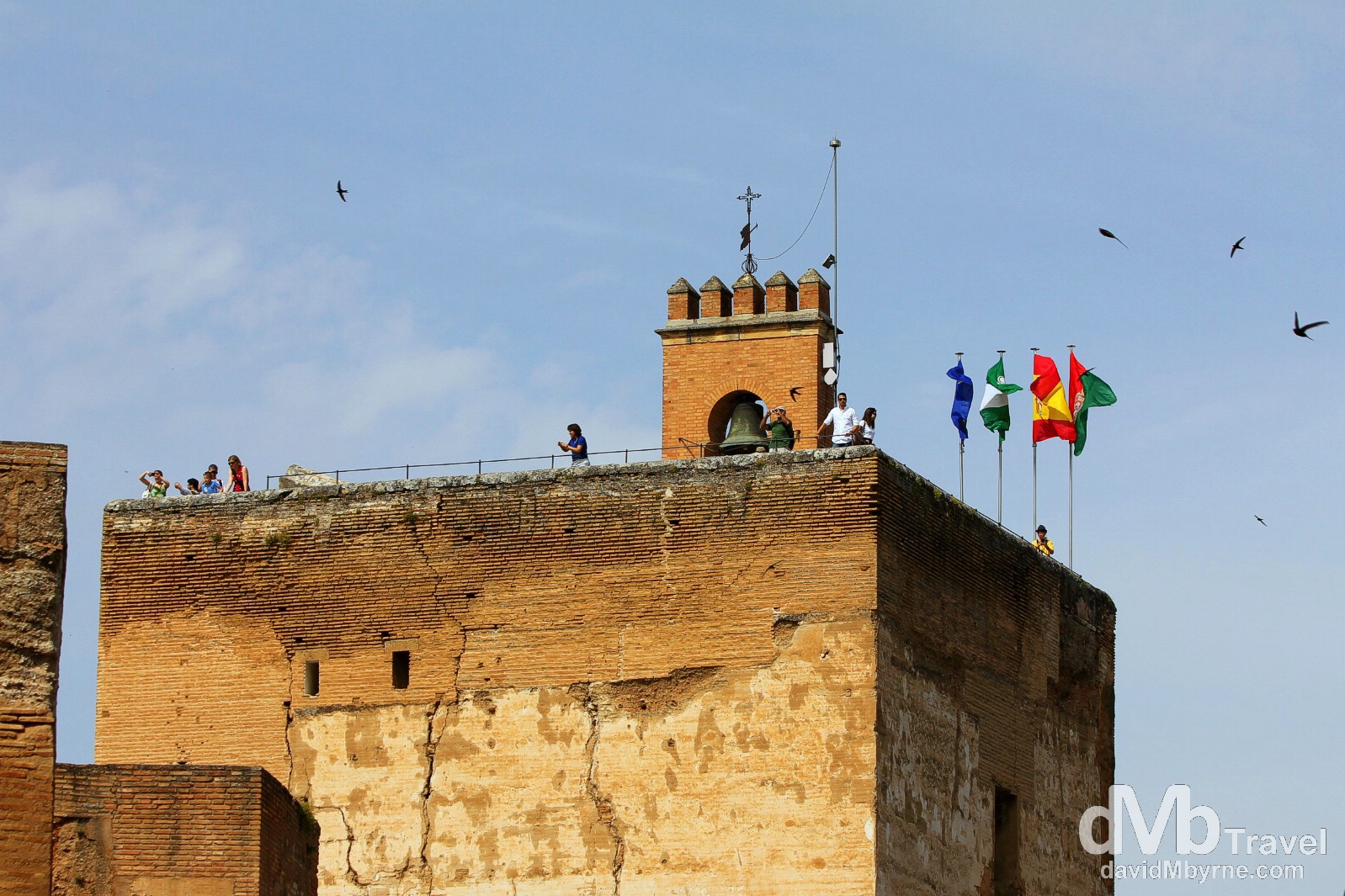
One final shot from my time in the Alhambra & surrounds, that of people atop the Torre de la Vela (Watchtower) in the Alhambra Alcazaba (Citadel). The ramparts & a few towers are all that survive of the old citadel with the Torre de la Vela offering the best views down over Granada & the distant Sierra Nevada. Some of the birds, mostly swallows, that seem to be perennially circling the skies above the Alhambra, an abiding memory of my visit, can be seen in this picture. Granada, Andalusia, Spain. June 11th, 2014 (EOS 60D || Canon 70-300 || 70mm, 1/500sec, f/9.0, iso100)
Right, a few more (mostly) non-Alhambra pictures from my time in Granada.
Churches
Needless to say there are quite a few churches in this city. I visited a few and decided against visiting others.
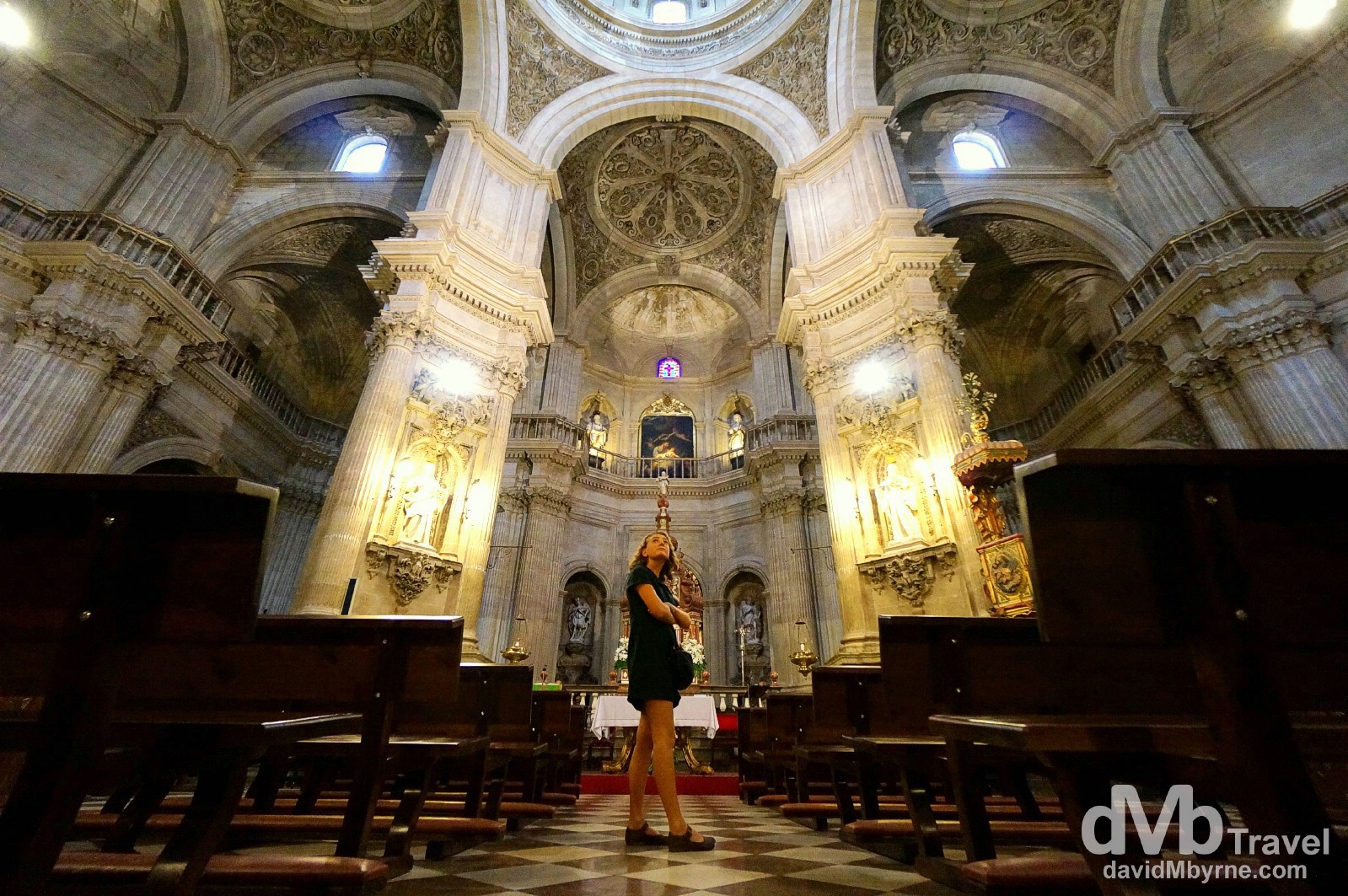
Viewing the inside of the 16th century Iglesia del Sagrario, the first church I visited in Granada. This church, built between 1705 & 1722, occupies the site where the major city mosque used to stand and is built to a smaller scale of the model by which St. Peter’s Basilica in Rome is built – a Greek cross inside a square. This picture was also uploaded to my Instagram account on my first evening in the city. Granada, Andalusia, Spain. June 10th, 2014 (NEX-5r || SEL1018 || 10mm, 1/60sec, f/4.0, iso3200)
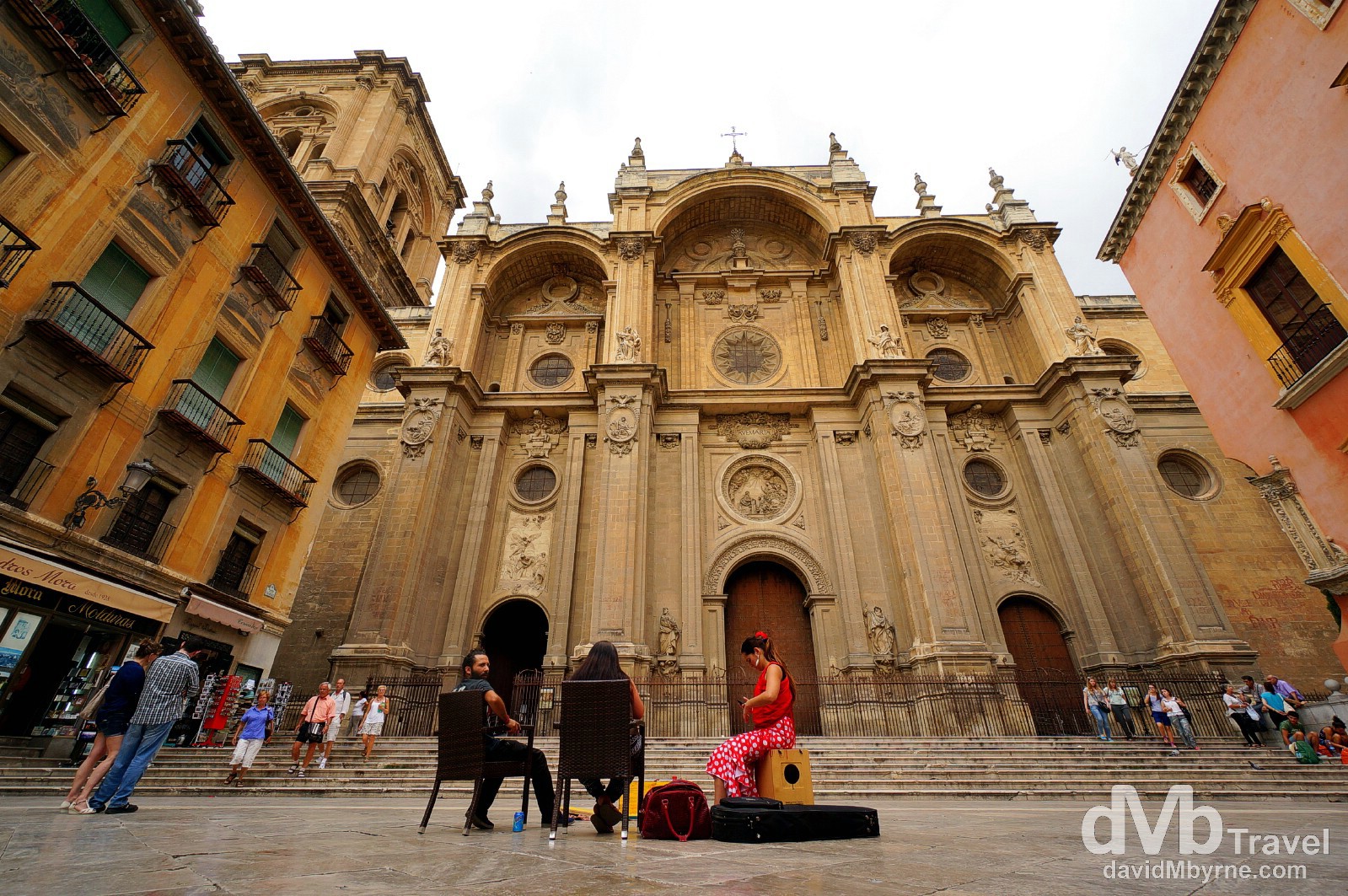
The facade of the Catedral de la Anunciacion, Granada’s main church, as seen from Plaza de las Pasiegas. A Gothic-Renaissance hulk built between 1522 and 1704 this is, according to the information post fronting it, one of the most impressive temples of the Spanish Renaissance. Its façade is certainly impressive – 4 heavy buttresses forming three great arched bays conceived as a colossal triumphal arch. I’ve yet to take a look inside and doubtless I will – its €4 to enter and I have issues paying to enter a church given the undeniable wealth of the Catholic Church. Plus, even after paying photography is not permitted, the real deal breaker for me. Plaza de las Pasiegas in Granada, Andalusia, Spain. June 10th, 2014 (NEX-5r || SEL1018 || 10mm, 1/125sec, f/8.0, iso100)

I did pay €4 to enter here (photography was allowed) and I’m sure glad I did as this was/is my church highlight from the city, the astonishing interior of the church of the Monasterio de San Jeronimo. Granada, Andalusia, Spain. June 11th, 2014 (NEX-5r || SEL1018 || 10mm, 1/60sec, f/4.0, iso1250)
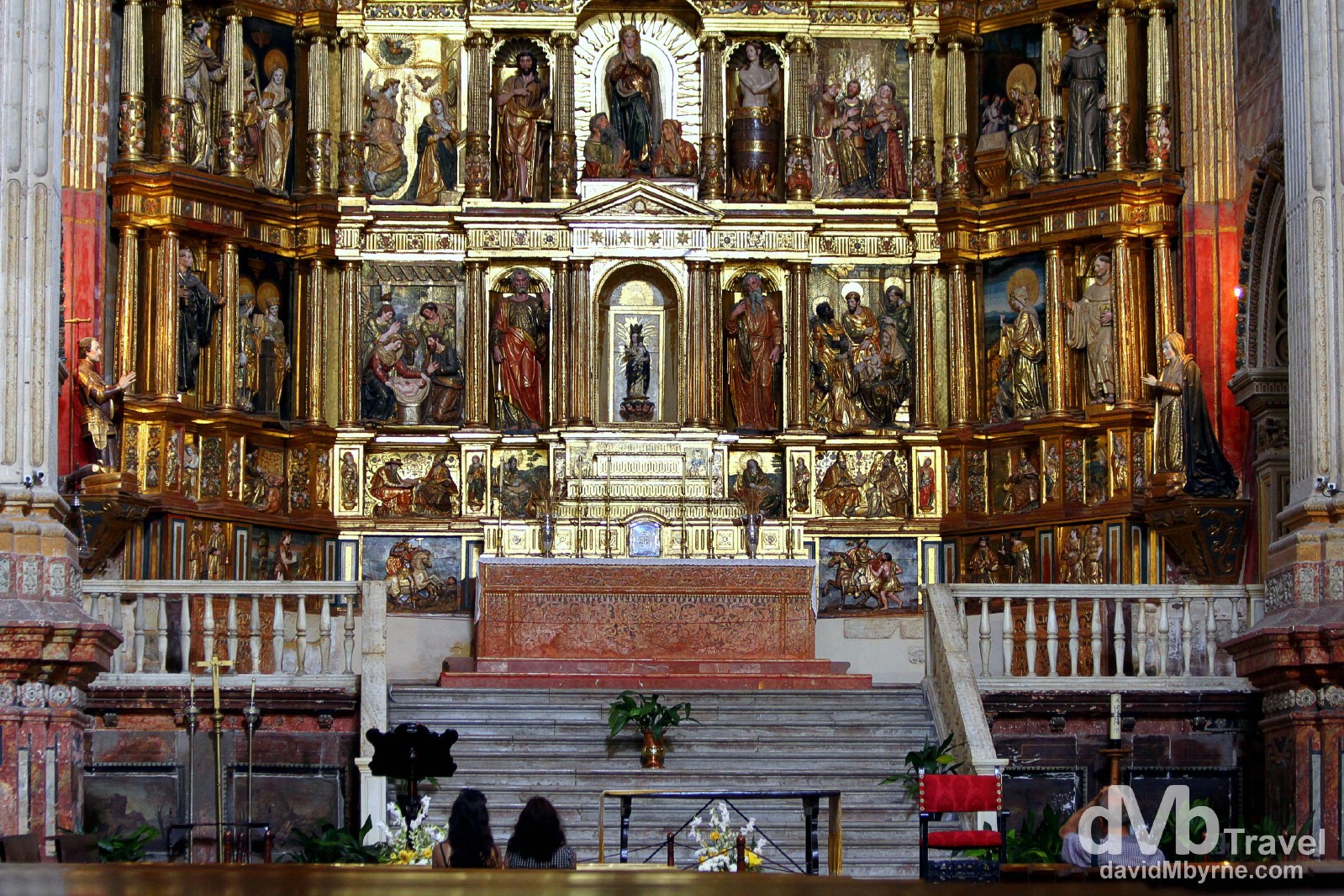
The detail of all areas of this church, but especially the altar area, are amazing. The church of the Monasterio de San Jeronimo. Granada, Andalusia, Spain. June 11th, 2014 (EOS 60D || Canon 70-300 || 70mm, 1/25sec, f/4.0, iso800)
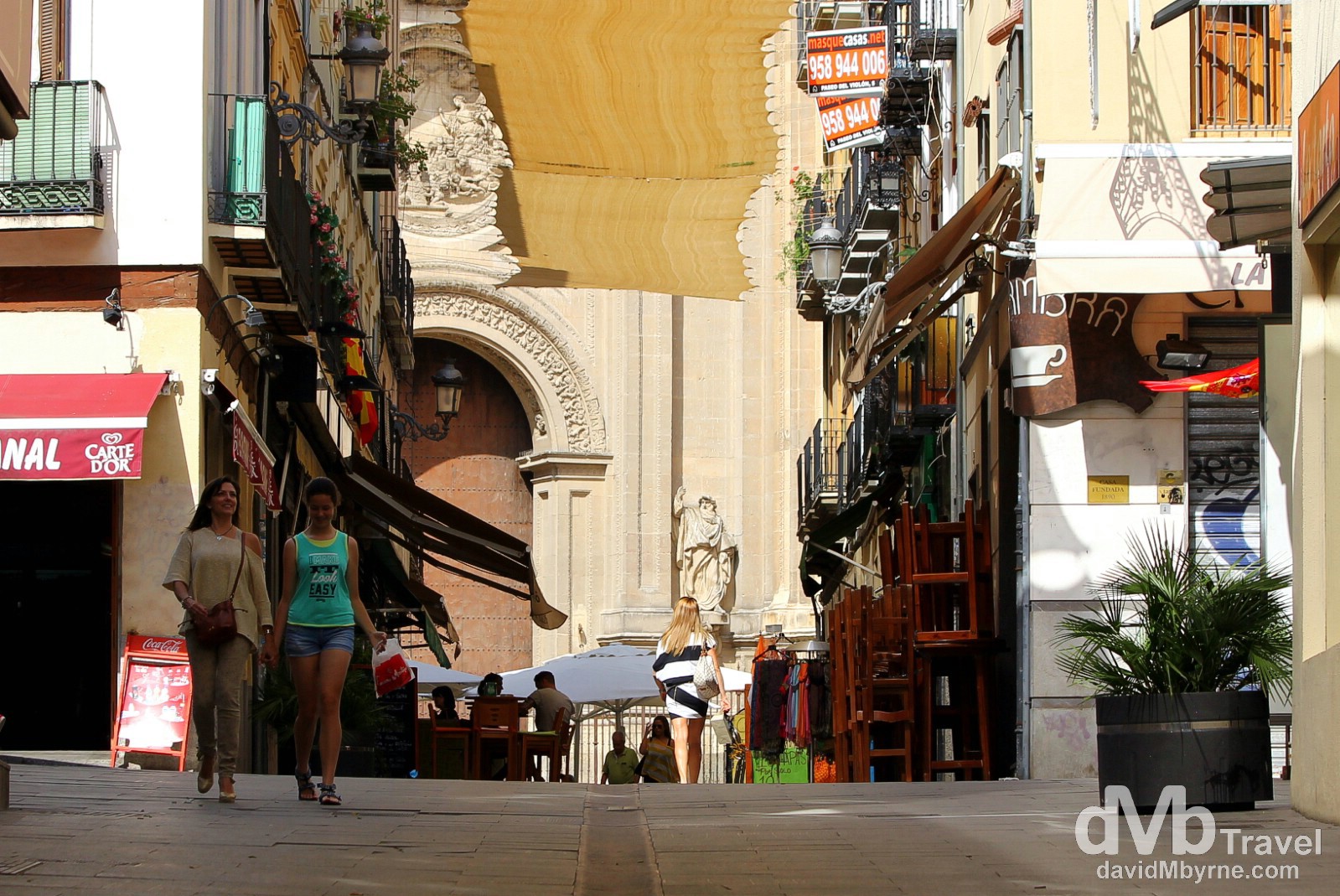
Calle Paz, a small pedestrianised street leading to Plaza de las Pasiegas & the façade of the Catedral de la Anunciacion. A lot of the streets here in Granada, both vehicular & pedestrian, are shielded from the sun thanks to large, overhead netting. Another nice Granada touch. Granada, Andalusia, Spain. June 10th, 2014 (EOS 60D || Camon 70-300 || 70mm, 1/320sec, f/7.1, iso100)
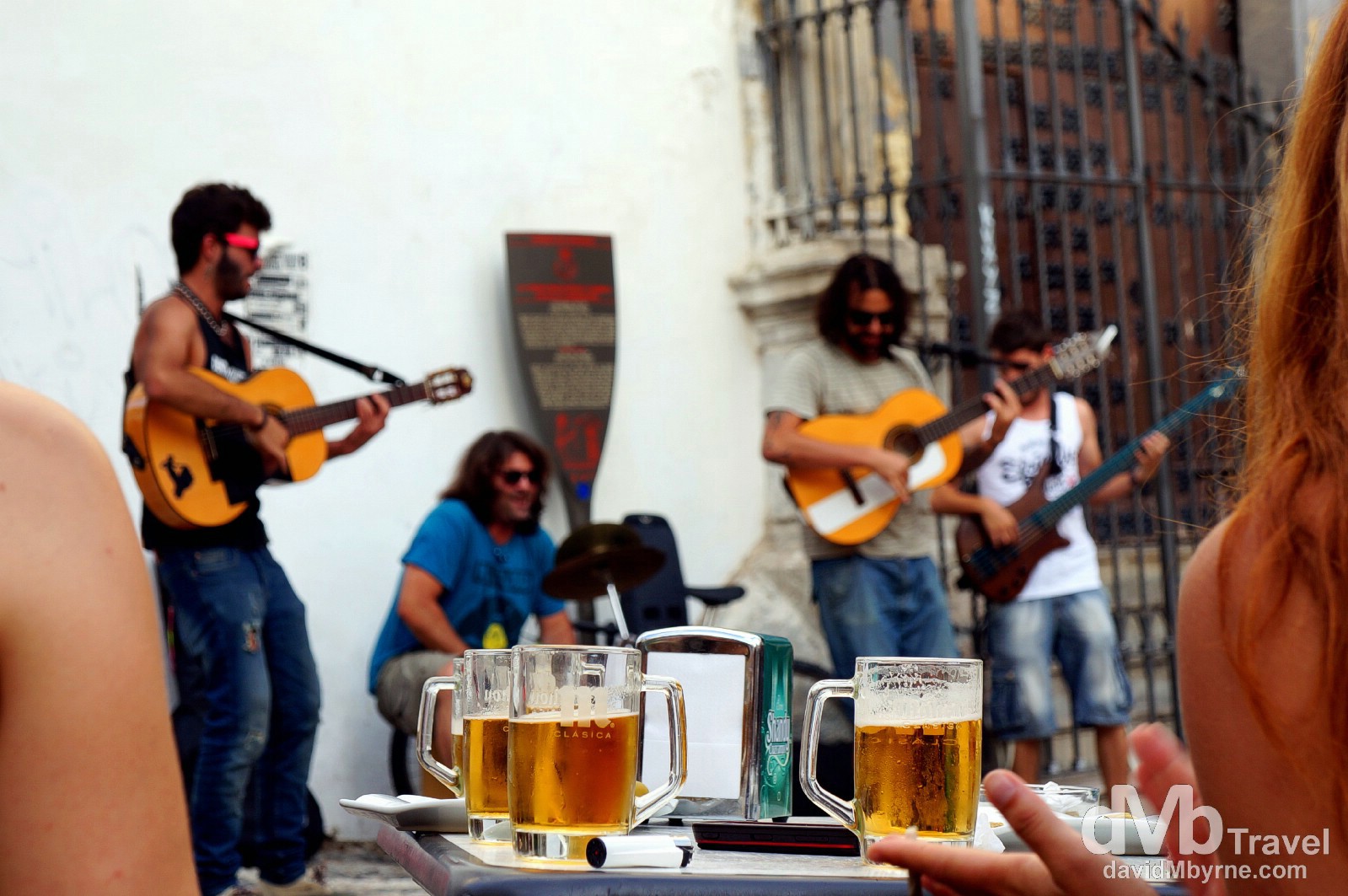
Enjoying a beer (& the buskers) in Placeta de San Gregorio. Granada, Andalusia, Spain. June 11th, 2014 (NEX-5r || SEL1855 || 47mm, 1/100sec, f/6.3, iso100)

People at the Mirador (Gazebo) San Nicolas viewing the Alhambra at sunset from the Albayzin district of the city across the Darro valley. This is a busy place at sunset and photographers here run the gamut from those with serious gear to those with tablets. Most seem in jovial mood although the guy with the serious rig seen here certainly didn’t look like he was enjoying the wait for the light on this day to sufficiently die. Mirador San Nicolas, Granada, Andalusia, Spain. June 11th 2014 (NEX-5r || SEL1855 || 43mm, 1/100sec, f/6.3, iso100)
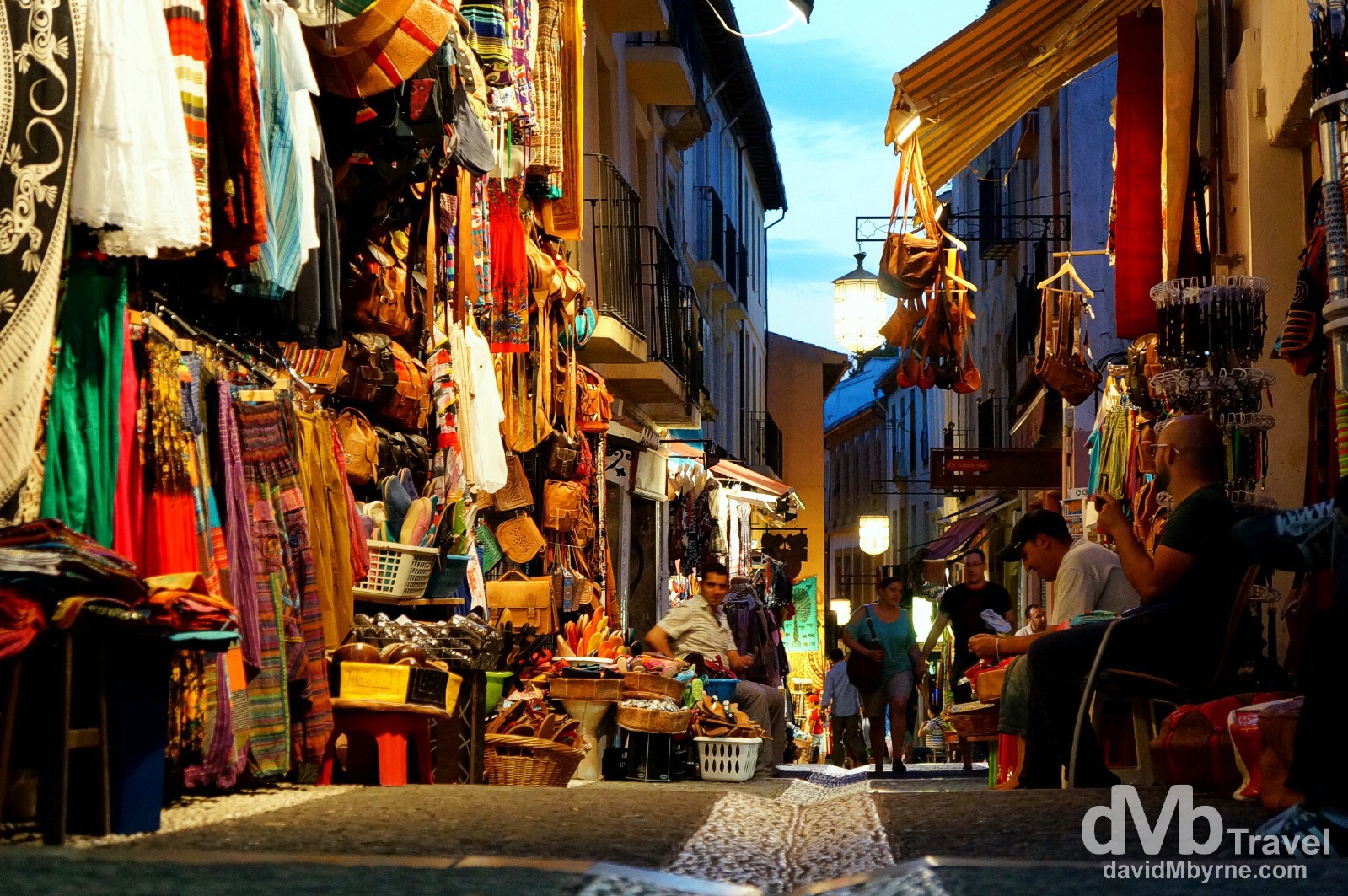
The Albayzin district of the city across the Darro valley is Granada’s old Muslim quarter. This area of steep, winding lanes survived the Christian conquest in 1492 and was granted UNESCO World Herritage status, along with the Alhambra & Generalife gardens, in 1984. The sights, sounds & smells when walking through here reminded me of walking medina lanes in Morocco, although this for-tourists area in Granada is a lot quieter, cleaner and smaller version of medina lanes found anywhere in Morocco that I happened to visit. Albayzin, Granada, Andalusia, Spain. June 11th, 2014 (NEX-5r || SEL1855 || 35mm, 1/30sec, f/4.5, iso1600)
– UNESCO
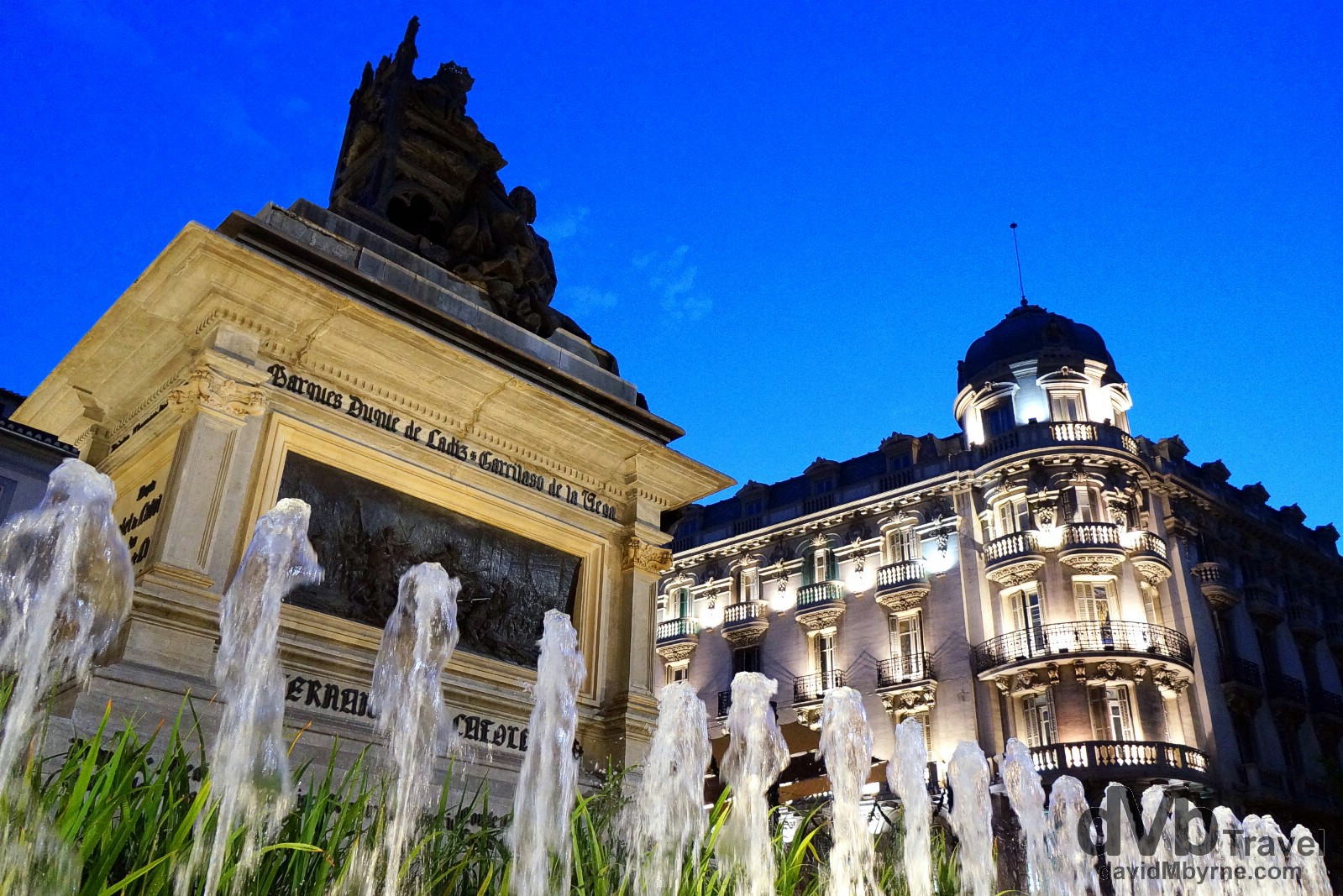
Dusk in Plaza Isabel La Catolica at the intersection of Granada’s two main streets, Calle Reyes Catolicos & Gran Via de Colon. Granada, Andalusia, Spain. June 11th, 2014 (NEX-5r || SEL1855 || 18mm, 1/160sec, f/4.0, iso1600)
Adios Andalusia
And just like that my 9-night stay in Andalusia, and 3-night stay in Granada, has come to an end, or it will have by the time I wake in the morning. I don’t have many plans for today, my last day in Granada. I’ll probably find a bar later tonight to watch the first game of the World Cup & tomorrow I’ll get the bus north to the capital Madrid, a city I have been to before, but not since way back in 1992. Spain play their first World Cup game tomorrow night & soaking up the atmosphere of that occasion is all I have planned for the capital just now.
______________________________________________________
